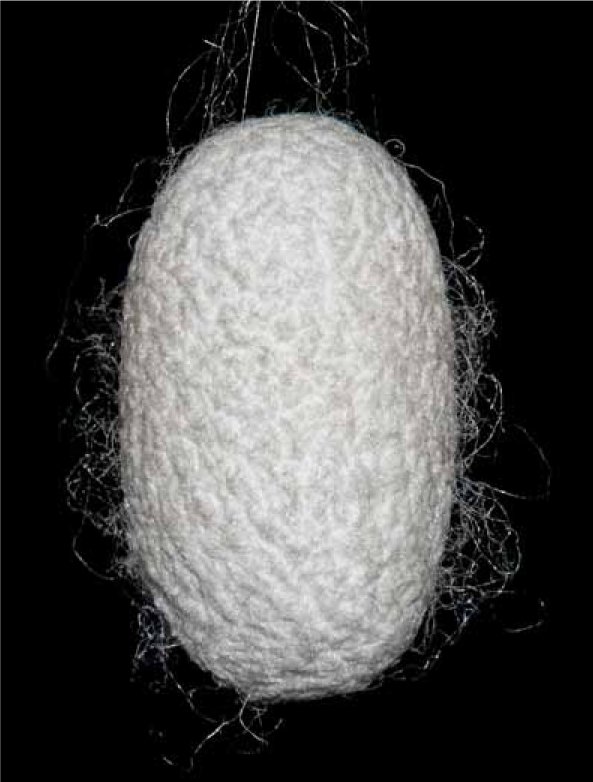Silk is a natural fibre that was first cultivated in Far East Asia more than 5,000 years ago, and formed one of the world’s first global industries. From its origins at the heart of the silk route it has recently emerged as a renewable material with a lot of potential outside the garment industry. However, to understand the new potential of silk, beyond its traditional associations with glamour, one has to understand the basics of silk’s properties. Starting as a less than glamorous protein excreted from the gland of the silkworm, which feeds on leaves of the mulberry tree, silk yields some incredible facts and statistics. First, and possibly most well known being silk’s strength – it is the strongest natural fibre – and second, its ability to reflect light, which is a result of its triangular and prismatic section.
Beyond these well-known properties are a number of staggering discoveries that Professor Fiorenzo Omenetto from Tufts University in Massachusetts is exploring. Fiorenzo, who describes silk as ‘a new old material’ is looking at reverse engineering silk, taking it back to the liquid form as it exists in the gland of the silk worm to look at an amazing range of future opportunities. Silk from silkworms is not the only form of silk that is currently under the microscope of scientists. Spider silk, which was recently found to be a super heat conductor, and bee silk are also emerging as new materials.
Image: Silk cocoon

•High strength-to-weight ratio
•Optical qualities
•Sustainable
•Biodegradable
•Biocompatible
•Low thermal conductivity
•Edible
Sources
China was at the heart of the silk route and continues to be the world’s largest producer of silk, followed by India.
Cost
Fiorenzo’s research is still in the development stage.
Sustainability issues
Silk is as ‘green’ as a material can get. Biodegradable, biocompatible and with a very high yield rate – the silk worm protects itself by wrapping a cocoon made from a single one kilometre (⅔ mile) fibre – it could be the truly ‘new old material’.
Production
A single cocoon can yield enough fibre to produce up to 1,000 metres (328 feet) of thread. However, beyond the traditional forms of making silk garments, different methods of exploiting silk are being explored. The processing is dependent on the form the silk takes, which can be nanoparticles, sponges, films, fibres or solid blocks. A surprising number of fabrication techniques are being proposed, including 2D and 3D inkjet printing, electrospinning, optical lithography, moulding, micromachining with lasers and spin coating.
Typical applications
Apart from the obvious uses of woven silk and its origins in exotic textiles from Asia, Fiorenzo proposes that silk can be used for implanting into the body to replace veins and arteries, as implantable fibre optics used to store data through its optical properties, and for compostable products and sustainable plastics.
| + | – |
|
–Excellent strength –Superb optical qualities –Biocompatible –Sustainable |
–Much of the research into new uses is still in development stages |
